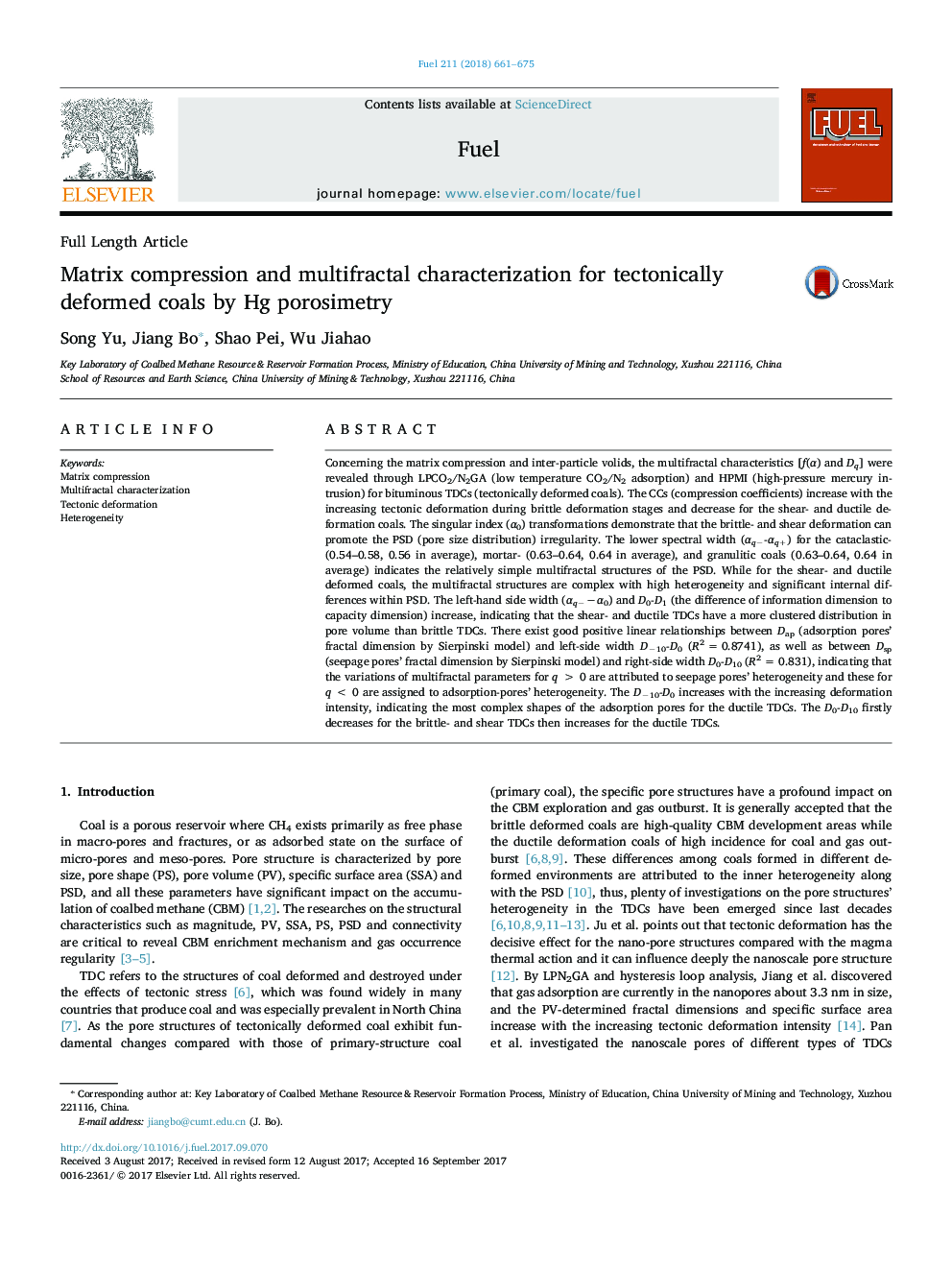| Article ID | Journal | Published Year | Pages | File Type |
|---|---|---|---|---|
| 6473578 | Fuel | 2018 | 15 Pages |
Abstract
Concerning the matrix compression and inter-particle volids, the multifractal characteristics [f(α) and Dq] were revealed through LPCO2/N2GA (low temperature CO2/N2 adsorption) and HPMI (high-pressure mercury intrusion) for bituminous TDCs (tectonically deformed coals). The CCs (compression coefficients) increase with the increasing tectonic deformation during brittle deformation stages and decrease for the shear- and ductile deformation coals. The singular index (α0) transformations demonstrate that the brittle- and shear deformation can promote the PSD (pore size distribution) irregularity. The lower spectral width (αqâ-αq+) for the cataclastic- (0.54-0.58, 0.56 in average), mortar- (0.63-0.64, 0.64 in average), and granulitic coals (0.63-0.64, 0.64 in average) indicates the relatively simple multifractal structures of the PSD. While for the shear- and ductile deformed coals, the multifractal structures are complex with high heterogeneity and significant internal differences within PSD. The left-hand side width (αqââα0) and D0-D1 (the difference of information dimension to capacity dimension) increase, indicating that the shear- and ductile TDCs have a more clustered distribution in pore volume than brittle TDCs. There exist good positive linear relationships between Dap (adsorption pores' fractal dimension by Sierpinski model) and left-side width Dâ10-D0 (R2 = 0.8741), as well as between Dsp (seepage pores' fractal dimension by Sierpinski model) and right-side width D0-D10 (R2 = 0.831), indicating that the variations of multifractal parameters for q > 0 are attributed to seepage pores' heterogeneity and these for q < 0 are assigned to adsorption-pores' heterogeneity. The Dâ10-D0 increases with the increasing deformation intensity, indicating the most complex shapes of the adsorption pores for the ductile TDCs. The D0-D10 firstly decreases for the brittle- and shear TDCs then increases for the ductile TDCs.
Related Topics
Physical Sciences and Engineering
Chemical Engineering
Chemical Engineering (General)
Authors
Song Yu, Jiang Bo, Shao Pei, Wu Jiahao,
